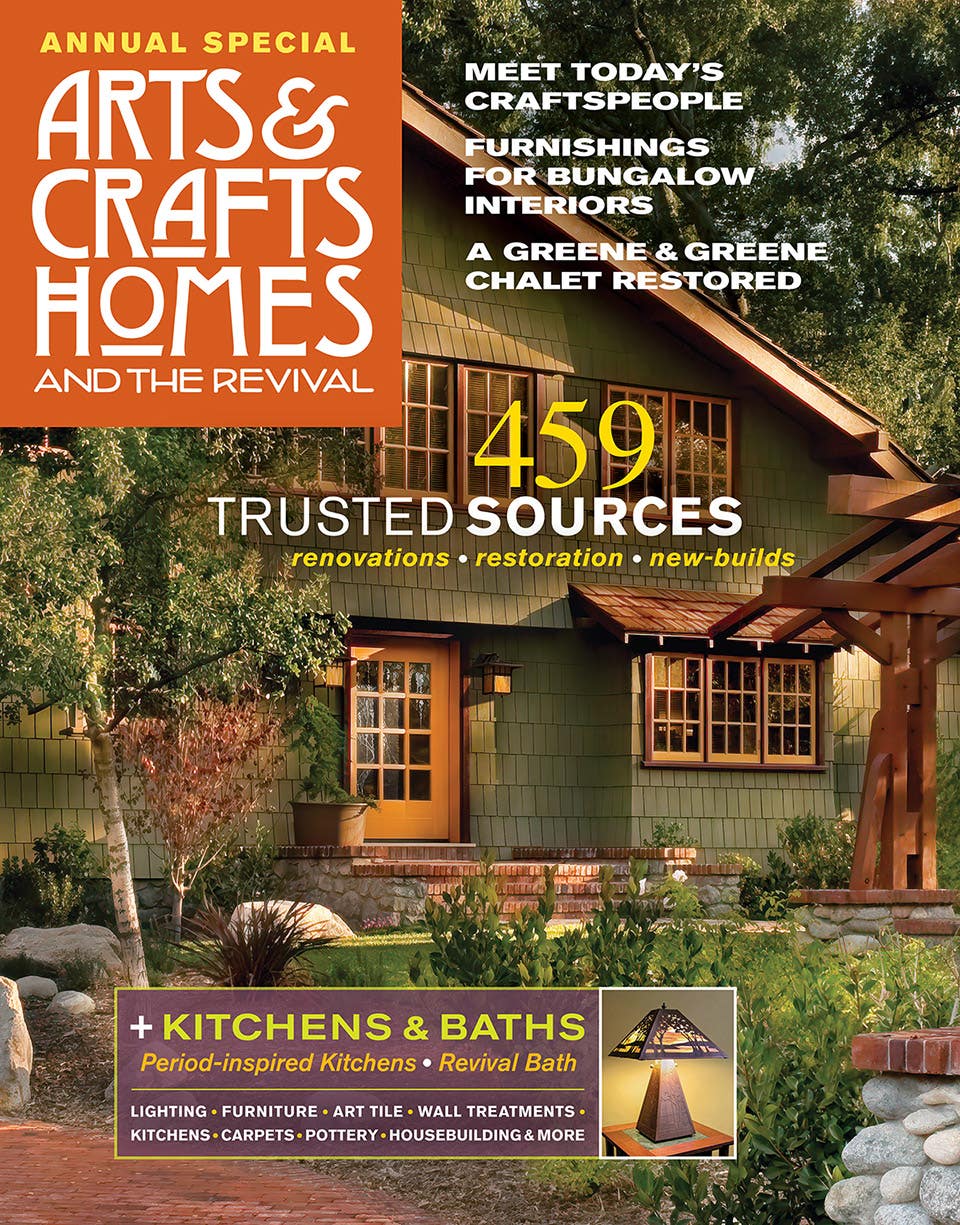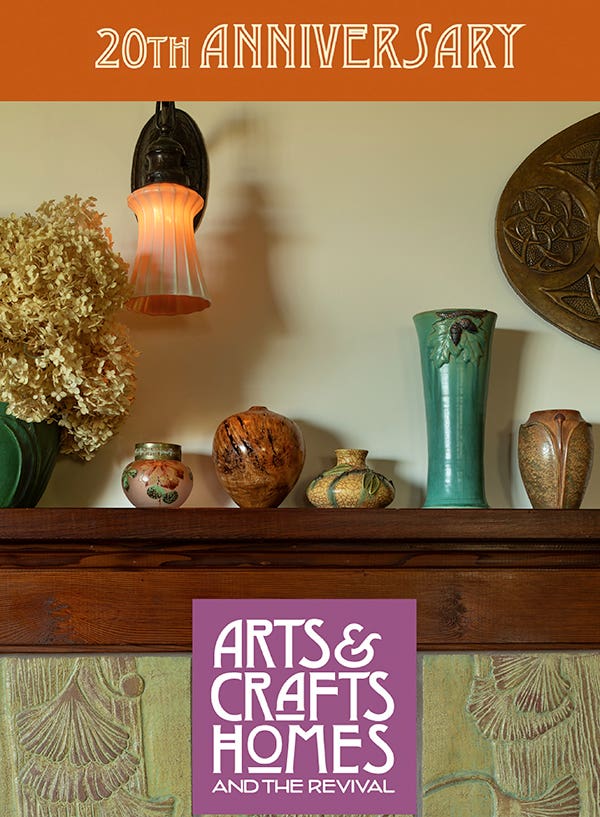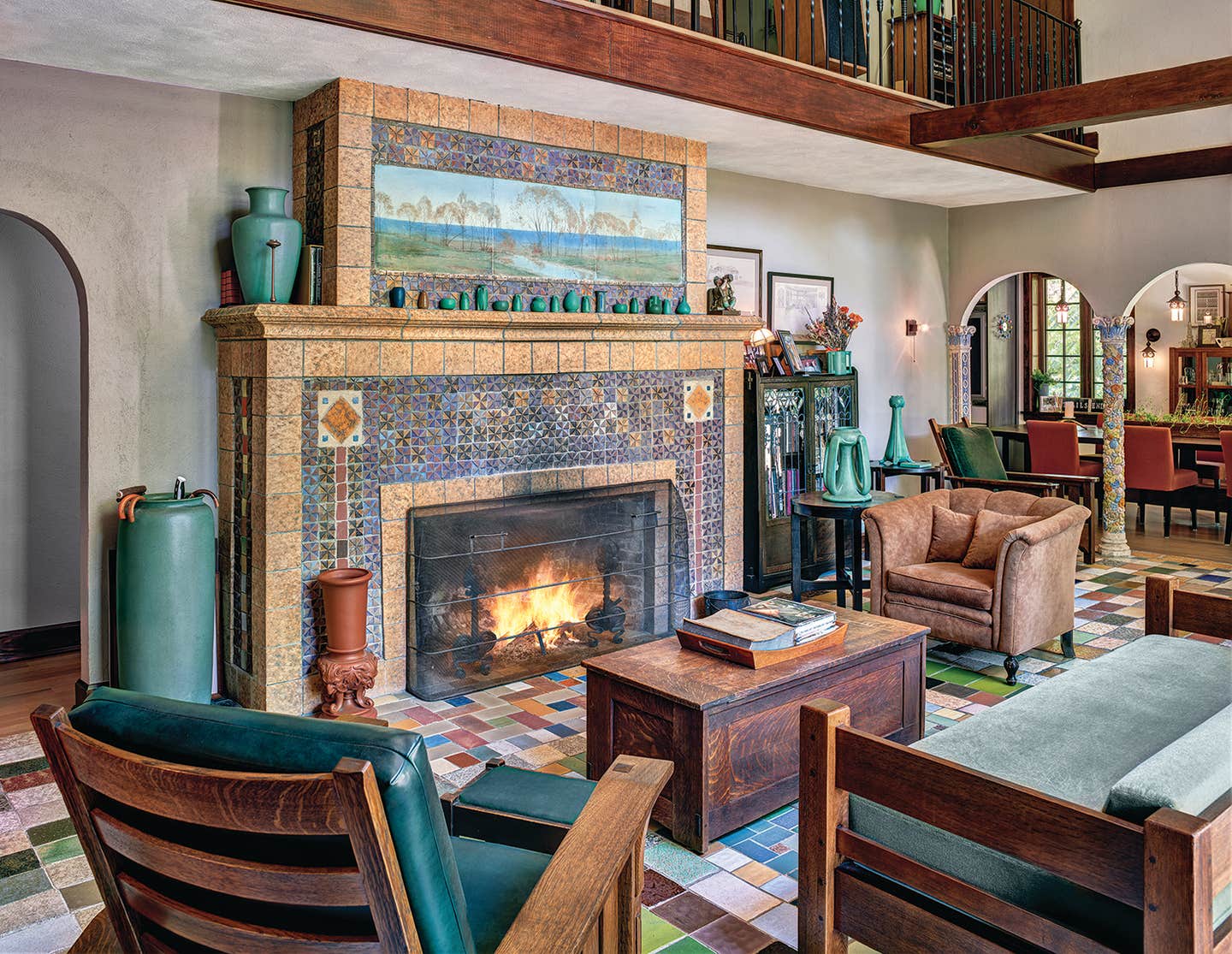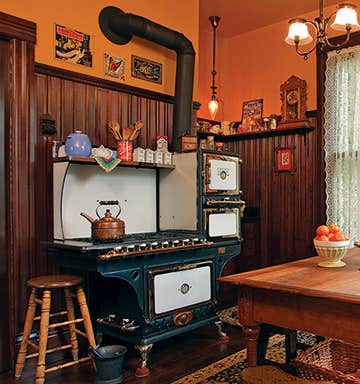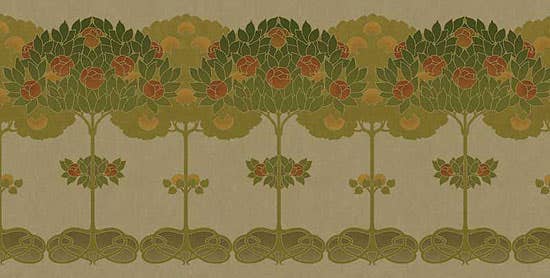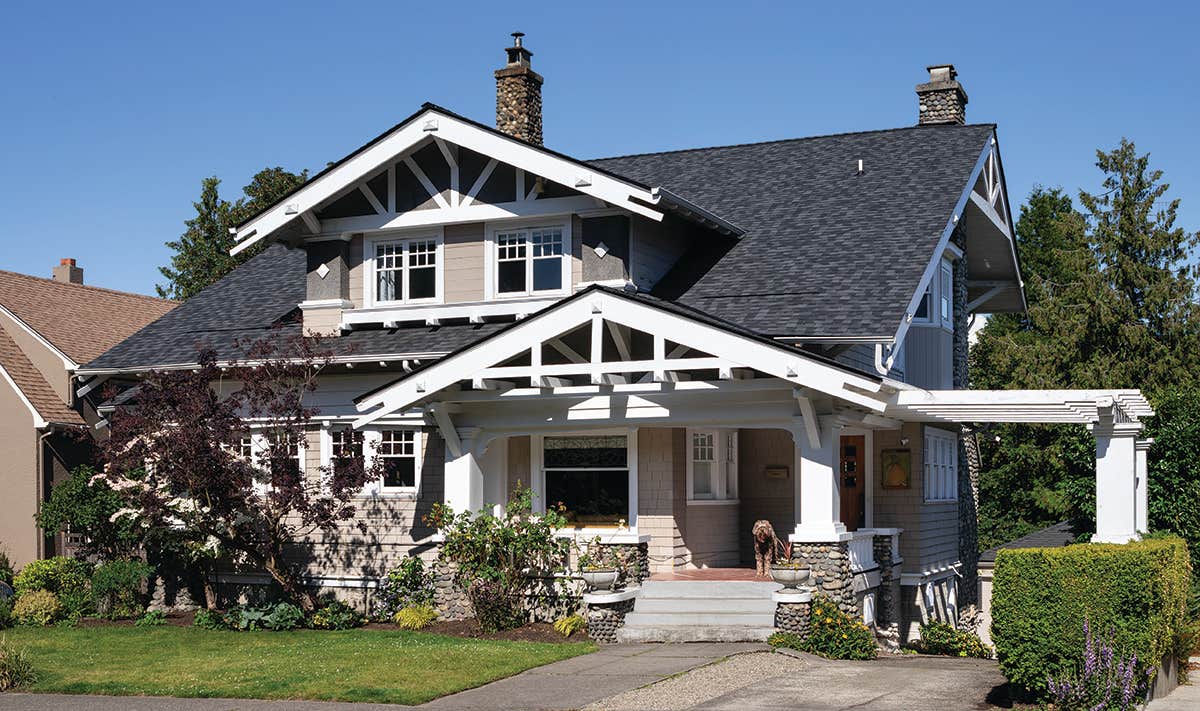Arts & Crafts Textiles Then & Now
For bungalows and Craftsman houses with severe woodwork and furniture, Arts & Crafts textiles are a critical part of the decorative scheme. Explore options for curtains, pillows, carpets, tapestries, stitchery, stenciling, table linens and bed covers.
For bungalows and Craftsman houses with severe woodwork and furniture, textiles are a critical part of the decorative scheme. It was Gustav Stickley who created what we think of as American Arts & Crafts-style textiles: utilitarian goods that perfectly complement these nature-loving houses. Curtains filter the light and provide privacy from the suburban street; pillows cushion built-in benches and oak rockers; rugs warm the floorboards. Embellished with a stenciled design, appliqué or embroidery, textiles also add color accents to rooms that might otherwise be somber.
Photos on these pages were taken in a “Hapgood house,” one of 500 surviving Craftsman-inspired homes built by developer Herbert J. Hapgood after 1911 in Mountain Lakes, New Jersey. Owners Suzanne and Rick Solch purchased this one about 20 years ago and moved in with daughter Amanda. “The house didn’t look especially Arts & Crafts,” Suzanne explains; remodeling had taken much of the integrity away from the 1913 stuccoed Foursquare.
The Solches not only restored such elements as the staircase and beamed ceilings, but also furnished the house in true Craftsman style. Well-chosen textiles add color and comfort while also furthering the sense of a period interior.
Here we see American Arts & Crafts textiles along with fabrics from around the world. Suzanne and Rick have traveled extensively and are avid collectors with eclectic taste. Treasured pieces, like the reproduction unicorn tapestry [see p. 40] in the living room, were found on their travels in Europe. Other textiles are both old and new. Suzanne is fond of embroidered textiles, from vintage pillows to the curtains and bedspreads she ordered from the workshop of Dianne Ayres (Arts & Crafts Period Textiles).
She found the material for the living room curtains in England, however. “We were on vacation in the Cotswolds and came across this fabric in a shop.” Rick did a quick estimate of how many yards they would need, and the couple bought the material on the spot.
Many of the treatments in the Solches’ house follow Stickley’s advice from his magazine The Craftsman. Unpleated curtains in the living room are hung from rings on plain rods and fall to the sill, not to the floor. The powder room has café curtains, nearly flat when drawn across the window. Kitchen windows are fitted with very practical roller shades, stenciled in paint. The bedspreads, too, are typical, featuring a graphic motif centered on an otherwise plain spread that covers the bed and pillows.
Craftsman
Texture is an important component of Craftsman textiles, which are often rough weaves in cotton (muslin, scrim) or linen. Sturdiness, wrote Stickley, kept textiles in character with the oak furniture and metalwork prevalent in Craftsman interiors. Fabrics for curtains, portières, and pillows were colored ecru, tan, or tea-stained—although curtains might tend toward ivory or gold to lend warmth. Curtains were often semi-sheer, meant to be drawn across the windows even during the daytime to filter light. Heavier drapery panels, of course, were pulled aside during the day.
Portières—curtains hung from a rod across a doorway or room opening—were still popular and an opportunity for color and design. They had the practical function of blocking drafts, and they provided a modicum of privacy and noise control. Appliqués, stenciling, and embroidery (as well as border fabrics) all were used. In large openings they would be made double-sided, or two sets would hang back to back so that each might coordinate with the room it faced. (Window curtains and portières were not often matched, though a motif or color might be held in common.)
Room illustrations in The Craftsman show large, square pillows, both plain and decorated with appliqué or embroidery. Stylized flowers (poppy, rose, wisteria) are prevalent, as are pinecones and ginkgo leaves. Table linens came into fashion as a way to dress the table while allowing most of the wood furniture to show. In the simplest form, a narrow table scarf is draped across the table off-center. Later illustrations show a scarf running down the center of the table lengthwise, and two or three scarves placed crosswise to form place settings. Hanging ends of the scarves often had embroidered or appliquéd designs.
Patricia Poore is Editor-in-chief of Old House Journal and Arts & Crafts Homes, as well as editorial director at Active Interest Media’s Home Group, overseeing New Old House, Traditional Building, and special-interest publications.
Poore joined Old House Journal when it was a Brooklyn-brownstoner newsletter in the late 1970s. She became owner and publisher and, except for the years 2002–2013, has been its editor. Poore founded the magazines Old-House Interiors (1995–2013) and Early Homes (2004–2017); their content is now available online and folded into Old-House Journal’s wider coverage. Poore also created GARBAGE magazine (1989–1994), the first unaffiliated environmental consumer magazine.
Poore has participated, hands-on, in several restorations, including her own homes: a 1911 brownstone in Park Slope, Brooklyn, and a 1904 Tudor–Shingle Style house in Gloucester, Massachusetts, where she brought up her boys and their wonderful dogs.

